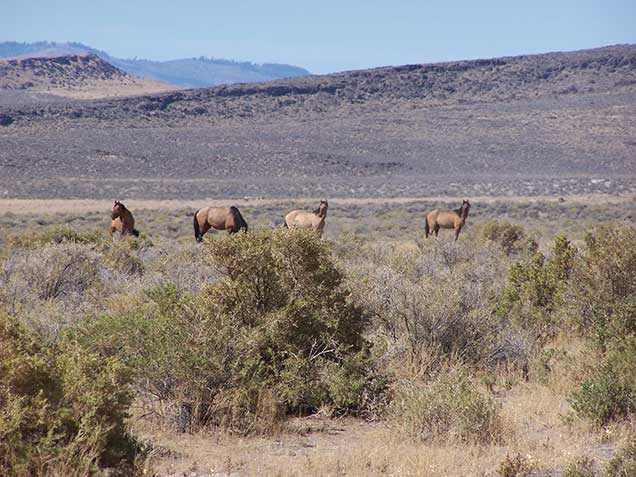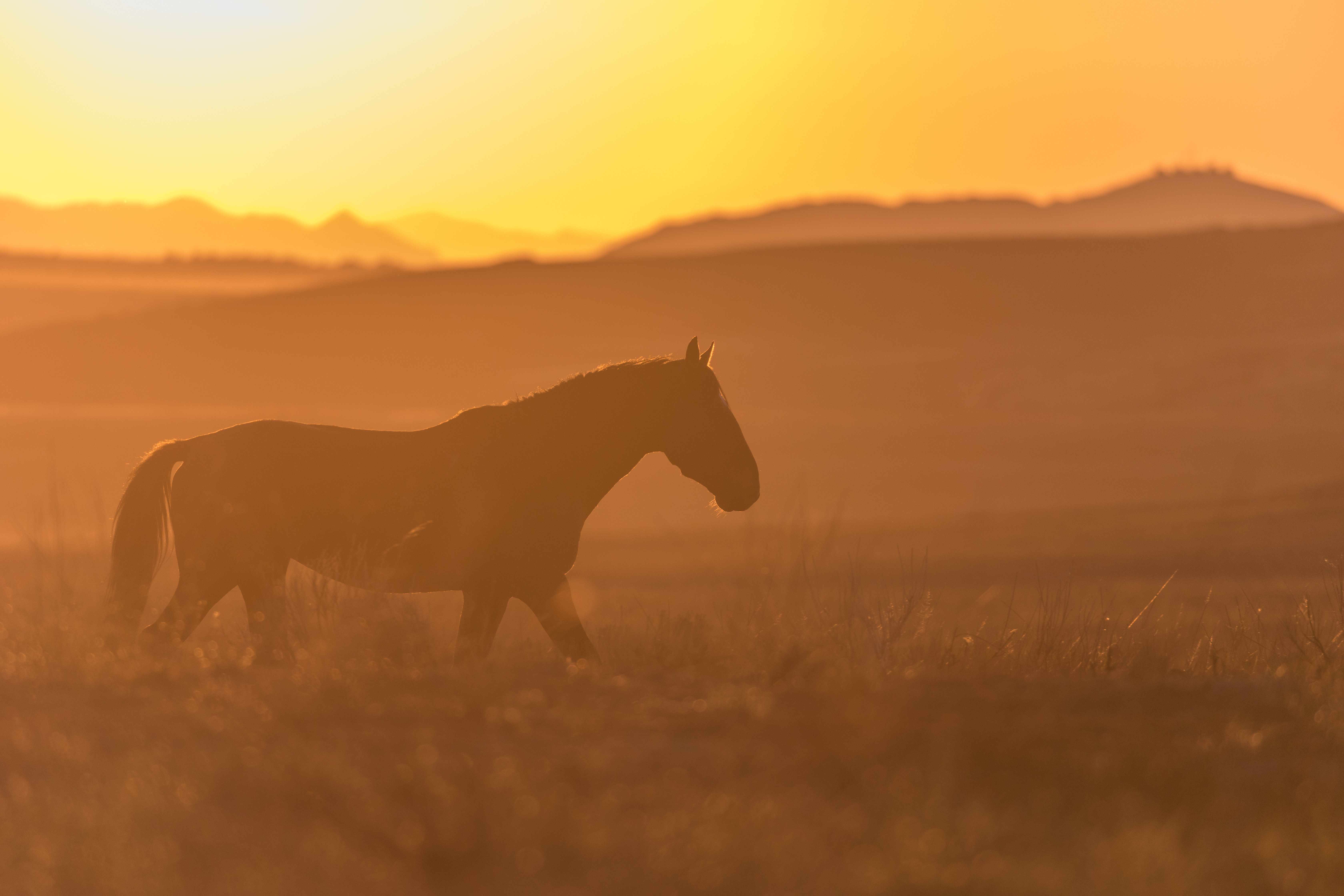Our blog series, Herds Across the West, examines wild horses by herd, Herd Management Area (HMA) and state to provide a deeper understanding as we report on roundups and actions affecting each region.
Carter Reservoir Wild Horses | Washoe County, NV & Modoc County, CA
Location
The Carter Reservoir herd is managed by the Bureau of Land Management (BLM) Cedarville/Surprise Field Station in California. The Carter Reservoir mustangs roam in remote areas, only accessible by guided horseback tours, in the high desert of northeastern California and north-western Nevada.  Their habitat ranges from gently rolling hills to steep rocky slopes where sagebrush, juniper trees, lava rock rimrocks, hills, valleys, and canyons are plentiful. These hearty mustangs peacefully share their range with various wildlife species including pronghorn, mule deer, and chukar.
Their habitat ranges from gently rolling hills to steep rocky slopes where sagebrush, juniper trees, lava rock rimrocks, hills, valleys, and canyons are plentiful. These hearty mustangs peacefully share their range with various wildlife species including pronghorn, mule deer, and chukar.
Characteristics
If you have the opportunity to witness these beautiful mustangs, you’ll see a range of bay, buckskin, and grulla -- distinguished by a set of markings from primitive dun horses. Such characteristics include a combo of the dun stripe down the back, plus shoulder stripes and leg strips. Typically, horses with these markings are descendants of the colonial Spanish horses, and in the case of the Carter Reservoir horses, DNA testing has linked them directly to the Spanish Iberian horses that were reintroduced in the 1600s.
 Popularity
Popularity
Out West, very few mustangs possess these markings, making the Carter Reservoir herd truly special. In fact, Carter Reservoir wild horses showcase such strong primitive markings that they’re recognized worldwide. They’ve even got their own spotlight on National Geographic’s Sierra Nevada Geotoursim page.
Roundup Status
In the last decade, the BLM conducted just one roundup in this area, removing 200 wild horses permanently from the HMA and returning 35 to their home. The current appropriate management level (AML) for these horses is between 25-35. Currently, the population is stable, but with the low AML levels, there is a huge concern about the genetic viability of the historic and unique herd.
Learn More
There are local groups dedicated to protecting the revered Carter Reservoir horses.


